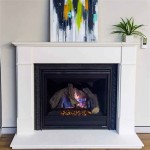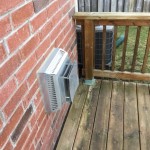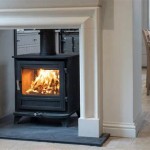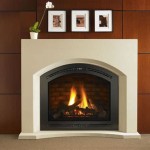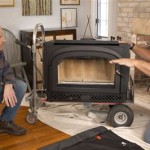Installing a Fireplace Hearth: A Comprehensive Guide
A fireplace hearth serves as a critical component of a fireplace system, providing a non-combustible surface in front of the firebox to protect the surrounding floor from sparks, embers, and radiant heat. Installing a fireplace hearth properly is essential for safety and compliance with building codes. This article will detail the steps involved in installing a fireplace hearth, encompassing material selection, preparation, installation, and finishing.
The primary function of a hearth is fire safety. Without a properly installed hearth, the risk of accidental fires significantly increases. Sparks or embers escaping the firebox can easily ignite flammable materials such as carpets, wood flooring, or furniture. The hearth acts as a barrier, containing these hazards and preventing them from spreading. Furthermore, the hearth distributes the heat generated by the fireplace, preventing excessive heat buildup in the surrounding structure.
Building codes typically specify the minimum size and construction requirements for fireplace hearths. These regulations vary depending on the type of fireplace, the fuel used (wood, gas, or electric), and the local jurisdiction. Consulting local building codes before commencing any hearth installation is imperative to ensure compliance and prevent potential safety hazards. These codes generally dictate the minimum thickness of the hearth material, its extension beyond the firebox opening, and its overall fire resistance rating.
Material Selection for a Fireplace Hearth
Choosing the right material for a fireplace hearth is crucial for both safety and aesthetics. Common hearth materials include brick, stone (such as granite, slate, or marble), tile, and concrete. Each material offers a unique combination of durability, heat resistance, and visual appeal.
Brick is a classic choice known for its rustic charm and excellent heat resistance. It's a relatively affordable option and can be arranged in various patterns. Stone provides a more elegant and durable solution. Granite and slate are particularly popular due to their high heat resistance and resistance to scratching and staining. Marble, while aesthetically pleasing, requires more careful maintenance as it can be porous and susceptible to staining.
Tile offers a vast range of design possibilities, with numerous colors, patterns, and sizes available. Ceramic and porcelain tiles are suitable choices, provided they are rated for high temperatures. Concrete hearths can be poured in place or pre-cast, offering a modern and customizable aesthetic. Concrete can be stained, stamped, or polished to achieve a variety of looks. The selected material must meet or exceed the fire resistance requirements specified by local building codes to ensure safety.
Preparing for Hearth Installation
Prior to installation, thorough preparation of the subfloor is essential. The subfloor must be level, structurally sound, and capable of supporting the weight of the hearth material. Inspect the subfloor for any signs of rot, damage, or unevenness. If necessary, repair or replace damaged sections of the subfloor before proceeding.
For wood framed floors, ensure that the joists are adequately sized and spaced to support the additional weight of the hearth. Reinforcing the joists may be necessary, especially if the hearth is constructed from heavy materials such as stone or concrete. A layer of cement board or a similar fire-resistant underlayment should be installed on top of the subfloor to provide an additional barrier against heat and sparks. This underlayment is then secured to the subfloor with appropriate screws.
Accurate measurements are critical for ensuring a proper fit. Measure the dimensions of the firebox opening and determine the required hearth size based on local building codes. Typically, the hearth must extend at least 16 inches in front of the firebox opening and 8 inches on either side for fireplaces with openings less than 6 square feet. For larger openings, the hearth extension requirements are often greater. Mark the outline of the hearth on the subfloor, using a level and square to ensure accurate alignment.
Installing the Hearth Material
The installation process varies depending on the chosen material. For brick, stone, or tile hearths, a layer of mortar is typically used to adhere the materials to the subfloor. Apply a generous layer of mortar to the underlayment, using a notched trowel to create even grooves. Position the first piece of hearth material on the mortar bed, pressing it firmly into place. Use spacers to maintain consistent grout lines between the pieces.
Continue laying the hearth material, ensuring that each piece is level and aligned with the adjacent pieces. Use a rubber mallet to gently tap the materials into place, ensuring proper adhesion to the mortar. Periodically check the level of the hearth surface with a level to identify and correct any unevenness. For poured concrete hearths, a form must be constructed to contain the wet concrete. The form should be securely fastened to the subfloor and lined with plastic sheeting to prevent the concrete from sticking to the form.
Pour the concrete into the form, ensuring that it is evenly distributed and compacted. Use a screed board to level the surface of the concrete. Allow the concrete to cure according to the manufacturer's instructions, typically several days. Once the concrete is fully cured, remove the form and finish the surface as desired, such as staining, polishing, or sealing.
Grouting is an essential step for brick, stone, and tile hearths. After the mortar has cured, apply grout to the joints between the materials, using a grout float to press the grout firmly into the spaces. Remove excess grout with a damp sponge, being careful not to disturb the grout within the joints. Allow the grout to cure according to the manufacturer's instructions, typically 24 to 48 hours. Seal the grout to protect it from staining and moisture.

How To Fit A Fireplace Tiles Hearth Victorian

Here S How Install A New Fireplace Surround And Gas Logs

Updating Fireplace Hearth No Demolition Required Single Girl S Diy

How To Build A Raised Fireplace Hearth Design

Chapter 2 Installing The Hearth Solus Concrete Fireplace Surround

Updating Fireplace Hearth No Demolition Required Single Girl S Diy

4 Things Every Homeowner Should Know Before Installing A Fireplace

How To Install A Marble Herringbone Fireplace Surround And Hearth

7 Benefits Of Installing A Gas Fireplace Low Maintenance Much More

Installing Hardwood Flooring Around A Fireplace Hearth Easiklip Floors

